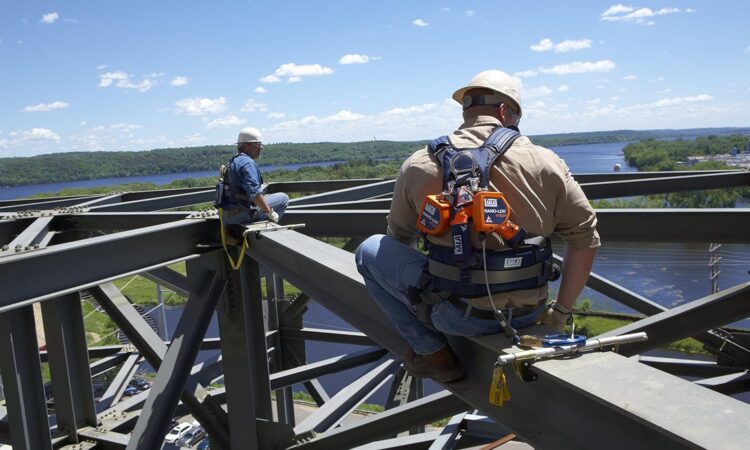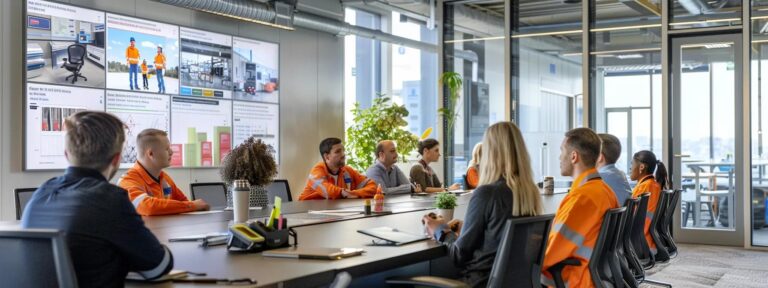Workplace safety is a non-negotiable priority, especially in industries where workers operate at heights. Falls remain one of the leading causes of workplace injuries and fatalities, making compliance with OSHA fall protection requirements essential. At US Fall Protection, we specialize in designing and installing fall protection systems to ensure worker safety and regulatory compliance. In this blog post, we’ll explore how OSHA standards shape fall protection systems, with a particular focus on guardrail systems, and how US Fall Protection can help your business stay safe and compliant.
What Are OSHA Fall Protection Requirements?
The Occupational Safety and Health Administration (OSHA) sets strict guidelines to protect workers from fall hazards. According to OSHA, employers are required to provide fall protection for workers at heights of 4 feet or more in general industry, 5 feet or more in shipyards, 6 feet or more in construction, and 8 feet or more in longshoring operations. These requirements are outlined in OSHA standards such as 29 CFR 1910 (General Industry) and 29 CFR 1926 (Construction).
Key components of OSHA fall protection requirements include:
- Risk Assessments: Employers must identify and evaluate fall hazards in the workplace.
- Fall Protection Systems: Employers must implement systems such as guardrails, safety nets, or personal fall arrest systems to mitigate risks.
- Training: Workers must be trained on the proper use of fall protection equipment and hazard recognition.
- Inspections and Maintenance: Fall protection systems must be regularly inspected and maintained to ensure effectiveness.
Failure to comply with these standards can result in costly fines, legal liabilities, and, most importantly, worker injuries. At US Fall Protection, we take compliance seriously, offering tailored solutions to meet OSHA standards across industries we serve.
The Role of Fall Protection Systems
Fall protection systems are designed to prevent or arrest falls, ensuring workers can perform their tasks safely. These systems can be categorized into two main types: passive and active. Passive systems, such as guardrails, require no action from the worker, while active systems, such as lifelines, require workers to use personal protective equipment (PPE).
At US Fall Protection, we specialize in both types, providing comprehensive solutions tailored to your specific needs. One of the most effective passive fall protection systems is the guardrail system, which we’ll explore in detail below.
Understanding Guardrail Systems
Guardrail systems are a cornerstone of passive fall protection. These systems are designed to prevent workers from falling off the side or ledge of a building, platform, or roof. Unlike active systems, guardrails require no training or equipment for workers to use, making them a cost-effective and reliable solution for many workplaces.
Key features of guardrail systems include:
- Top Rails: Positioned at a height of 42 inches (±3 inches) to provide a physical barrier.
- Midrails: Installed halfway between the top rail and the working surface to prevent workers from slipping underneath.
- Toeboards: Positioned at the base to prevent tools or materials from falling off the edge.
Guardrail systems are particularly effective in environments where workers frequently access elevated surfaces, such as rooftops, mezzanines, or construction sites. At US Fall Protection, our guardrail systems are custom-designed to meet OSHA standards and withstand harsh environmental conditions, ensuring long-term durability and safety.
Why Choose Guardrail Systems?
Guardrail systems offer several advantages over other fall protection solutions:
- Passive Protection: Workers don’t need to wear harnesses or attach to anchor points, reducing the risk of human error.
- Cost-Effectiveness: Once installed, guardrails require minimal maintenance compared to active systems.
- Versatility: Guardrails can be installed on a variety of surfaces, including flat roofs, sloped roofs, and elevated platforms.
At US Fall Protection, we work closely with your team to design and install guardrail systems that meet your specific needs. Whether you’re in construction, telecommunications, or utilities, our solutions are tailored to the industries we serve.
How US Fall Protection Ensures Compliance
Meeting OSHA fall protection requirements can be challenging, especially for businesses with complex or unique work environments. That’s where US Fall Protection comes in. With over 35 years of experience, we provide turnkey solutions that cover every aspect of fall protection, from risk assessments to system design, installation, and maintenance.
Our process includes:
- Consulting: We assess your workplace to identify fall hazards and recommend the best solutions.
- Design and Installation: Our in-house experts design and install OSHA-compliant guardrail systems and other fall protection solutions.
- Annual Maintenance: We offer fall protection annual maintenance to ensure your systems remain effective and compliant.
Ready to ensure your workplace is OSHA-compliant? Get a free quote today and let us help you protect your workers.
Compliance with OSHA fall protection requirements is not just a legal obligation—it’s a moral responsibility. By investing in high-quality fall protection systems, such as guardrails, you can create a safer work environment and avoid costly penalties. At US Fall Protection, we’re committed to providing durable, OSHA-compliant solutions tailored to your needs. Explore more insights on workplace safety in our blog and contact us to get a free quote today.




